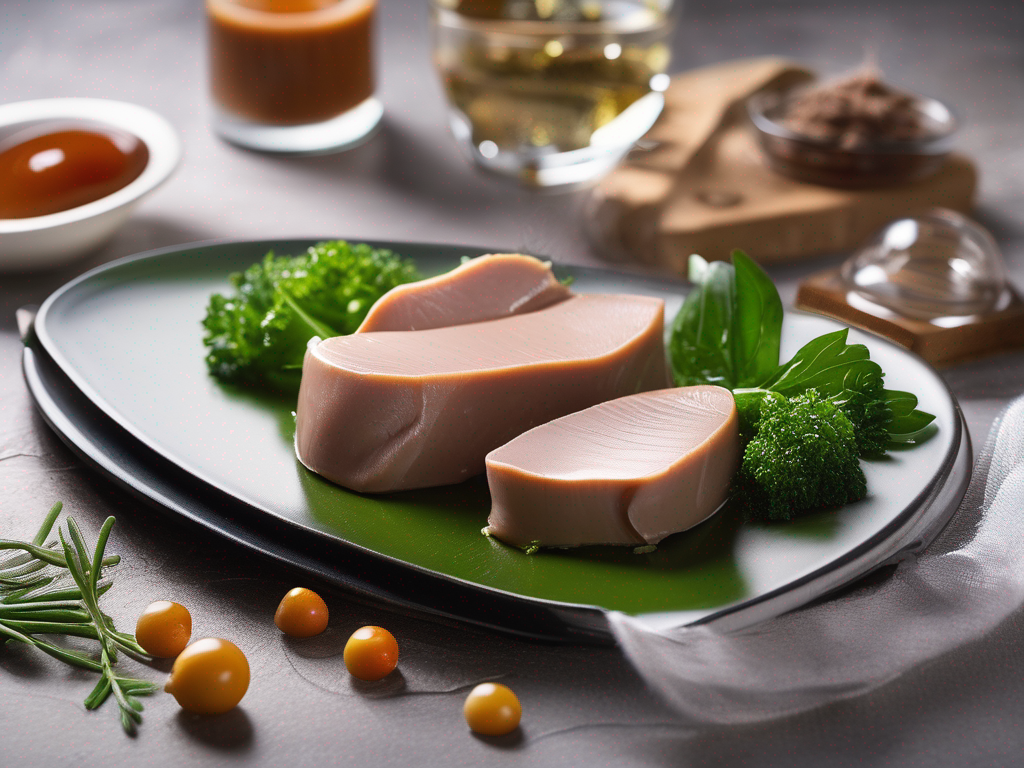
Proper Storage of Goose Liver Pâté to Prevent Spoilage
Get Your Free Food Safety Cheat Sheet
30 most common foods with instant answers. Print it and stick it on your fridge—completely free!
Proper Storage of Goose Liver Pâté to Prevent Spoilage
Goose liver pâté, also known as foie gras, is a delicacy enjoyed by many food enthusiasts. However, proper storage is crucial to prevent spoilage and maintain its quality. In this blog post, we will discuss how to store goose liver pâté effectively to ensure its freshness and safety for consumption. (Goose liver p t)
Importance of Proper Storage
Proper storage of goose liver pâté is essential to prevent the growth of harmful bacteria and ensure its taste and texture remain intact. Improper storage can lead to foodborne illnesses and spoilage, rendering the pâté unsafe to eat. By following the guidelines for storing goose liver pâté, you can prolong its shelf life and enjoy it at its best quality.
Factors Affecting Spoilage
Several factors can contribute to the spoilage of goose liver pâté, including:
- Temperature fluctuations
- Exposure to air
- Contamination from other foods
- Improper packaging
Understanding these factors is crucial in implementing the right storage practices to prevent spoilage.
Tips for Proper Storage
To ensure the freshness and safety of your goose liver pâté, follow these tips for proper storage:
Refrigeration
- Store goose liver pâté in the refrigerator at a temperature of 35-40°F (1-4°C).
- Keep the pâté in its original packaging or transfer it to an airtight container to prevent exposure to air.
- Place the pâté in the coldest part of the refrigerator, away from raw meats and seafood.
Freezing
- If you need to store the pâté for an extended period, consider freezing it.
- Wrap the pâté tightly in plastic wrap or aluminum foil before placing it in a freezer-safe container.
- Label the container with the date of freezing to track its shelf life.
Avoid Temperature Fluctuations
- Avoid frequent temperature fluctuations by not leaving the pâté out at room temperature for prolonged periods.
- Thaw frozen pâté in the refrigerator overnight rather than at room temperature to prevent bacterial growth.
Proper Packaging
- Use airtight containers or vacuum-sealed bags to store goose liver pâté and prevent air exposure.
- Ensure the packaging is clean and dry before storing the pâté to avoid contamination.
Rotation
- Practice the "first in, first out" rule when storing multiple containers of pâté to use the oldest ones first.
- Check the expiration date of the pâté and discard any that have surpassed their shelf life.
Safety Precautions
When storing goose liver pâté, it is essential to take the following safety precautions to prevent contamination and ensure food safety:
- Wash your hands before handling the pâté to avoid transferring bacteria.
- Use separate utensils for serving the pâté to prevent cross-contamination.
- Discard any pâté that has an off odor, appearance, or texture, as these are signs of spoilage.
By following these storage tips and safety precautions, you can enjoy your goose liver pâté safely and deliciously.
Conclusion
Proper storage of goose liver pâté is crucial to maintain its quality and prevent spoilage. By refrigerating or freezing the pâté, avoiding temperature fluctuations, using proper packaging, and following safety precautions, you can extend its shelf life and enjoy it at its best. Remember to always check the expiration date and discard any pâté that shows signs of spoilage. With these guidelines in mind, you can savor the rich flavor of goose liver pâté with peace of mind. (Goose liver p t)
Related Posts
Here are some other articles you might find helpful:
Authoritative Food Safety References
These agencies and university labs inform every tip and health precaution we publish.
USDA FoodKeeper – Cold Storage Guidelines
Official refrigerator, freezer, and pantry timelines maintained by the U.S. Department of Agriculture.
Visit USDA FoodKeeperFDA Produce Safety Rule & Grower Guidance
Field-to-fridge handling practices that prevent contamination of fruits, vegetables, and leafy greens.
Visit FDA Produce SafetyCDC Foodborne Illness Prevention Hub
Surveillance-backed guidance on pathogens, symptoms, and steps to reduce foodborne illness risk.
Visit CDC Food SafetyUC Davis Postharvest Technology Center
University research detailing optimal storage atmospheres for produce after harvest.
Visit UC Davis PostharvestPenn State Extension – Home Food Preservation & Safety
Peer-reviewed extension bulletins on safe canning, chilling, and reheating practices.
Visit Penn State ExtensionGet Your Free Food Safety Cheat Sheet
30 most common foods with instant answers. Print it and stick it on your fridge—completely free! Want more? Upgrade to the complete guide with 70+ foods.
Scan your food directly and get instant safety info using our AI-powered camera feature.